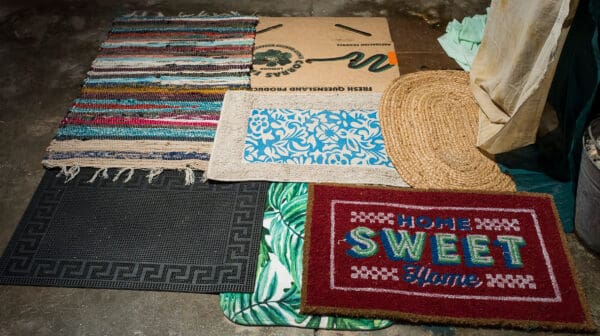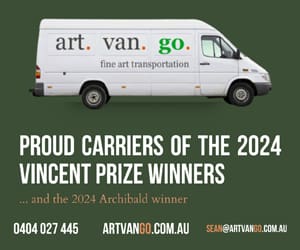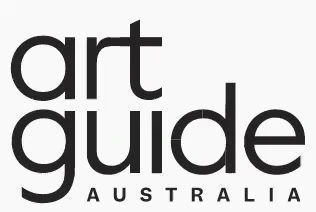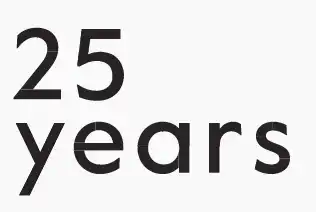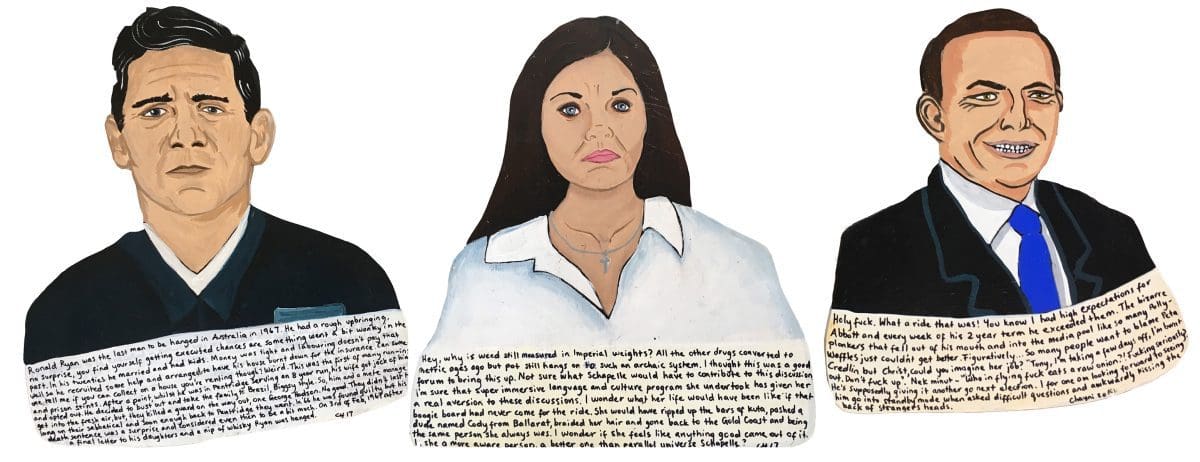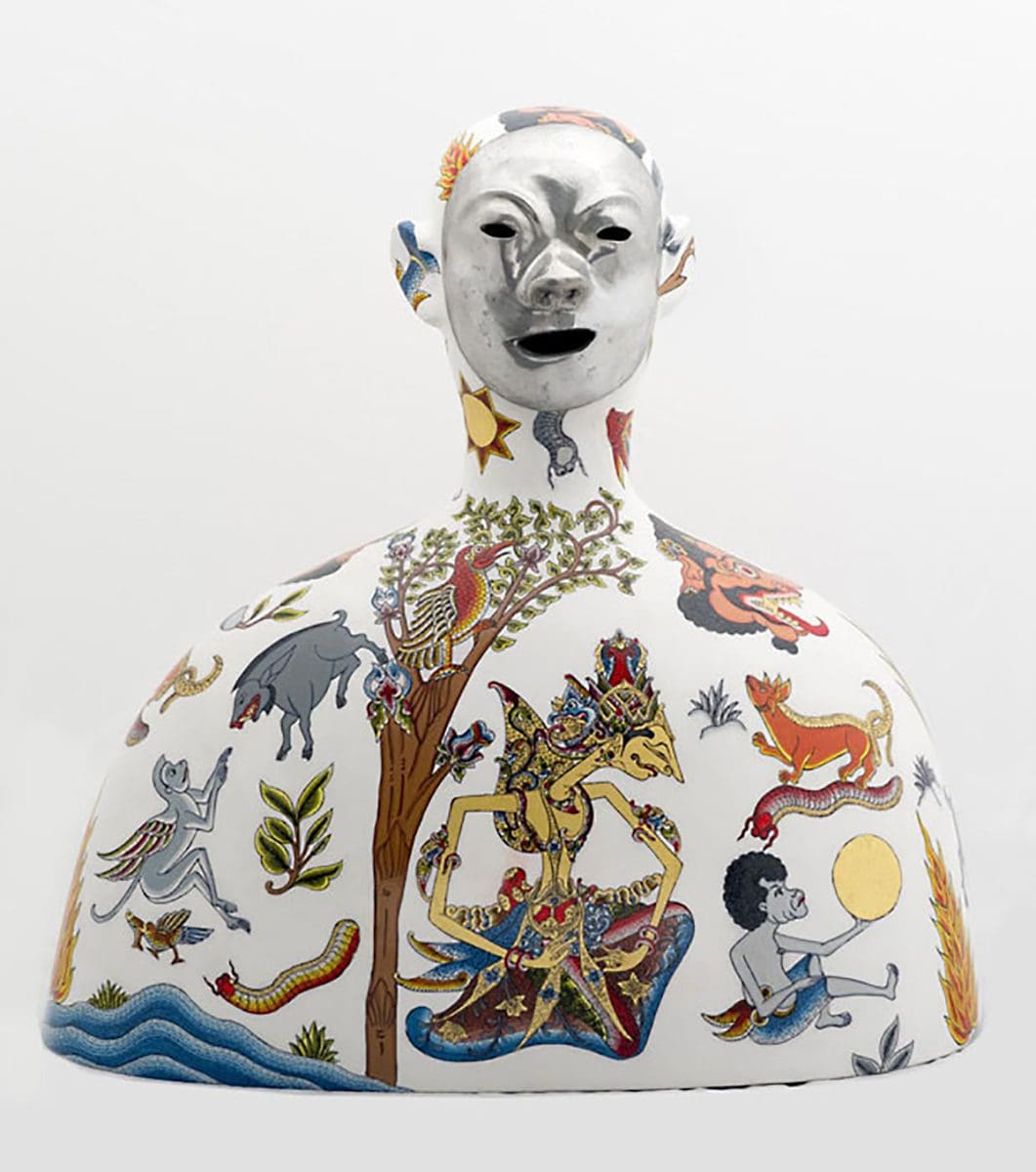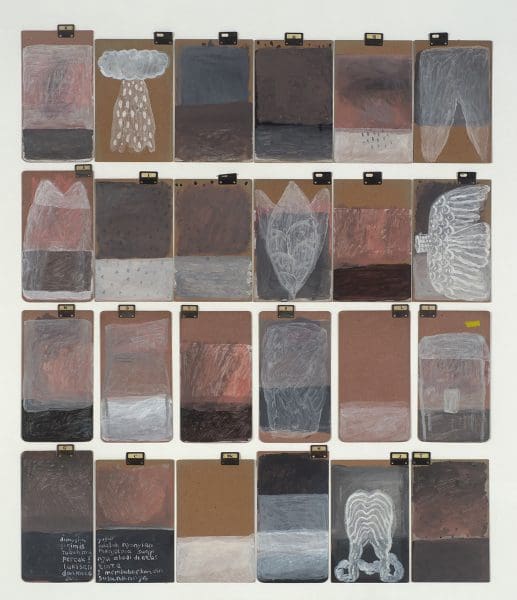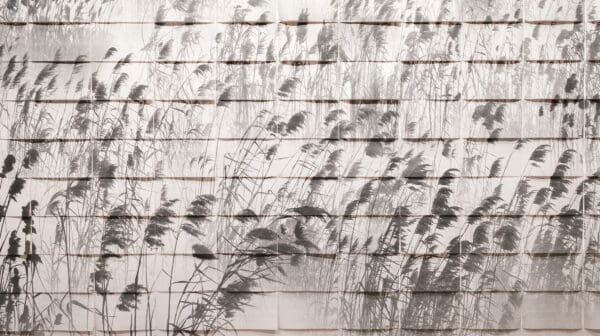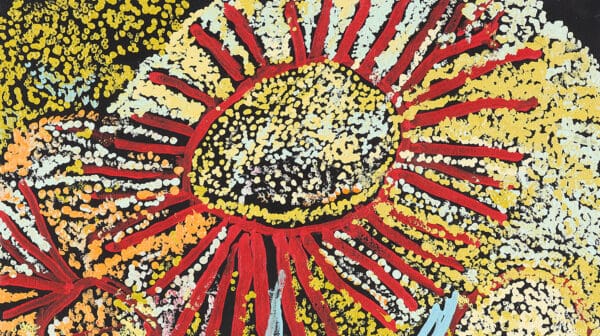Within the art world’s nesting-doll enclaves of global, national and local circles of prominence, smaller towns tend to be left out of the loop.
Increasingly, however, region is a matter of perspective. The director of Bega Valley Regional Gallery (BVRG), Iain Dawson, is keenly aware of this. Bega is located on the south-eastern edge of New South Wales – but through a new exhibition series, titled South/East Interference, Dawson hopes to expand senses of place further than local boundaries.
South/East Interference Vol. 2 draws together artists from Indonesia, the Northern Territory and New South Wales in an exploration of place and identity. For Dawson, the project began to germinate during a 2016 research trip to the Northern Territory and Queensland, where exhibitions such as the 8th Asia Pacific Triennial (APT8) at Queensland Art Gallery | Gallery of Modern Art (QAGOMA) and Monster Pop! at the Museum and Art Gallery of the Northern Territory foregrounded Australia’s geographical and cultural position as an outpost of Southeast Asia.
Embracing this strategy, Dawson loops regional New South Wales into broader conversations of place across the Australasian art world.
“I wanted to locate us as also part of the southeast in terms of Australasia,” he says, “and introduce the idea of being part of Southeast Asia to our audience.”
In South/East Interference Vol. 2, artists’ styles and influences crisscross each other like radio waves. Cut-out puppet-like forms and figurative busts appear across a number of works, perhaps suggesting the theatre of international politics as well as more intimate constructions of identity and self.
Dawson describes Dadang Christanto’s Cart from the North, 2014, as “a pivotal work” in the exhibition. In it, a life-sized horse and cart holds a pile of 65 human heads cast in aluminium; each is engraved with traditional Javanese wayang (shadow puppet) figures. Like several previous works, this installation references a 1965 event in which eight-year-old Christanto witnessed the abduction of his father by soldiers, during a time of violent political unrest. Christanto’s shadow puppets are echoed in the work of Jumaadi, who works between Australia and Indonesia; here however they are softened into dreamlike figures cut out from board and hide.
Australia and Indonesia have had a few tense moments in recent years, often related to the porousness of our national borders (specifically, who and what do we allow in and out?).
At least two players in this drawn-out game appear in Darwin-based Chayni Henry’s Perps and Pollies, 2018, which muses on Australian figures of fame and infamy. In the diaristic accompaniment to each portrait, the artist gleefully expounds on Tony Abbott’s prime ministership – “What a ride that was!” – and wonders about an alternate- dimension Schapelle Corby (minus the boogie board incident): “She would have ripped up the bars of Kuta, pashed a dude named Cody from Ballarat, braided her hair and gone back to the Gold Coast.”
Located firmly in the Top End, Gunybi Ganambarr’s 2017 work Gudalmirri is made from the remnants of an old metal tank and engraved with an angle-grinder. Dawson describes this work as “speaking loudly of place”; Ganambarr’s expert mark-making depicts a dilly bag, which references both the place of Gudalmirri and a cyclical narrative journey of birth and death. The aluminium support itself indicates the changing use of land and the impact of mining and other industry on Yolngu country and culture.
This digging up of land is another recurring theme. Ramesh Mario Nithiyendran’s Mud Men, ceramic sculptures of exuberant chaotic figures, seem crudely formed, as though they emerged half-made from the earth – or perhaps from the bright, toxic Javanese lake in Val Wens’ installation Banyuwangi. In this video work the artist teeters on a rocky outcrop beside a smouldering sulphur mine, precariously balancing vessels on his outstretched arms. He has a protective mask to shield against fumes, although the workers behind him do not; the lake in question is a brilliant inviting turquoise, though is highly acidic.
It’s a balance that threatens to topple at any moment.
In curating this exhibition series, Dawson emphasises that the Bega Valley Regional Gallery program “is not restricted, simplified or changed down a gear because of our physical location.”
“Whether it’s through technology or cheap travel, we are all global citizens now,” he says. “The regions aren’t backwaters – we are able to influence the agenda.”
South/East Interference Vol. 2
Bega Valley Regional Gallery
15 December 2018—9 February 2019
